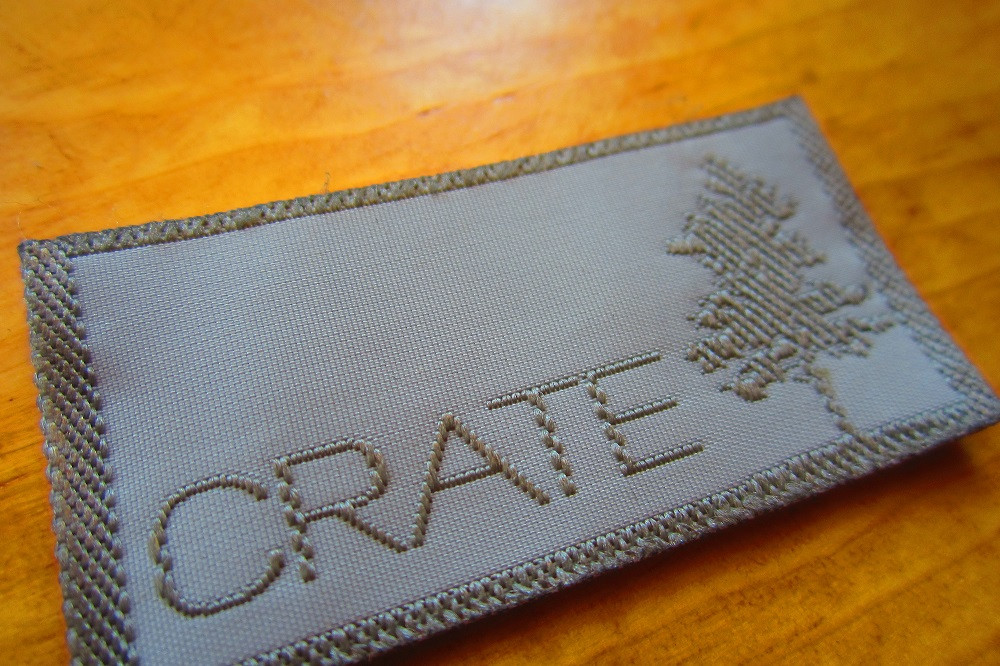Woven labels are a crucial component of the fashion and apparel industry. They serve not only as identifiers but also as tools for branding, information dissemination, and quality assurance. This article explores the various aspects of Woven Labels For Clothing, including their types, materials, production processes, and the significant roles they play in the clothing industry.
Table of Contents
ToggleTypes of Woven Labels
Woven labels come in different types, each serving a specific purpose and catering to various needs within the clothing industry. The primary types include:
1. Brand Labels
Brand labels are essential for establishing brand identity. They usually feature the brand’s name, logo, and sometimes a slogan. These labels are prominently placed on the clothing item to ensure brand visibility and recognition.
2. Size Labels
Size labels provide information about the size of the clothing item. They are crucial for both retailers and consumers, ensuring the correct fit and simplifying the shopping process.
3. Care Labels
Care labels contain instructions on how to properly care for the garment. This information includes washing, drying, and ironing guidelines, helping to extend the lifespan of the clothing item.
4. Composition Labels
Composition labels inform consumers about the materials used in the garment. This is important for individuals with allergies or preferences for certain fabrics, such as organic cotton or synthetic fibers.
5. Specialty Labels
Specialty labels include any additional information or branding elements, such as limited edition tags, promotional messages, or QR codes that link to websites or social media.
Materials Used in Woven Labels
The choice of material for woven labels significantly impacts their durability, feel, and overall appearance. Common materials include:
1. Cotton
Cotton is a popular choice for woven labels due to its softness and natural feel. It is ideal for high-end and sustainable fashion brands.
2. Polyester
Polyester is durable, resistant to shrinking and stretching, and can withstand high temperatures. It is often used for labels on sportswear and other garments that require frequent washing.
3. Satin
Satin labels offer a smooth, glossy finish, providing a luxurious feel. They are often used in lingerie, bridal wear, and other high-end garments.
4. Damask
Damask is a high-density weave that allows for intricate and detailed designs. It is commonly used for brand labels where detail and clarity are essential.
Production Process of Woven Labels
The production of woven labels involves several steps, each crucial to achieving the desired quality and appearance. The process typically includes:
1. Design
The first step is designing the label. This includes choosing the layout, font, colors, and any graphical elements. The design must align with the brand’s identity and the specific requirements of the label.
2. Yarn Selection
Selecting the appropriate yarn is crucial. The choice of yarn depends on the desired material, color, and durability of the label.
3. Weaving
Weaving is the process where the design is transferred onto the label. This is done using specialized looms that interlace the yarns to create the desired pattern and text.
4. Finishing
Finishing involves cutting the woven labels to the desired size and adding any additional treatments, such as heat sealing to prevent fraying or adding an adhesive backing.
5. Quality Control
Quality control is essential to ensure that the labels meet the required standards. This includes checking for consistency in design, color accuracy, and durability.
Roles of Woven Labels in the Clothing Industry
Woven labels play several vital roles in the clothing industry, beyond merely identifying a brand or providing care instructions. Some of these roles include:
1. Branding and Marketing
Woven labels are a powerful branding tool. They help establish and reinforce brand identity, making garments easily recognizable. Effective label design can enhance brand perception and loyalty.
2. Consumer Information
Labels provide essential information to consumers, including size, care instructions, and material composition. This information is crucial for making informed purchasing decisions and maintaining the garment’s quality.
3. Compliance and Legal Requirements
Many countries have regulations regarding the information that must be included on clothing labels. These regulations often include the country of origin, material composition, and care instructions. Woven labels ensure compliance with these legal requirements.
4. Quality Assurance
High-quality woven labels indicate attention to detail and commitment to quality. They can enhance the perceived value of the garment and build consumer trust in the brand.
5. Traceability
Woven labels can include information that aids in traceability, such as batch numbers or production dates. This is particularly important for quality control and addressing any issues that may arise post-production.
Trends and Innovations in Woven Labels
The woven label industry is continuously evolving, with new trends and innovations emerging to meet the changing demands of the fashion and apparel industry. Some notable trends include:
1. Sustainable Materials
With the growing emphasis on sustainability, many brands are opting for eco-friendly materials for their woven labels, such as organic cotton, recycled polyester, and biodegradable options.
2. Smart Labels
Smart labels incorporate technology, such as QR codes or NFC chips, allowing consumers to access additional information or interactive content using their smartphones.
3. Customization
Advances in technology have made it easier to produce customized woven labels in smaller quantities. This allows brands to offer personalized labels or limited edition runs without significant cost increases.
4. Minimalist Designs
Minimalist designs are becoming more popular, focusing on simplicity and elegance. These designs often feature clean lines, neutral colors, and minimal text, aligning with modern fashion trends.
Woven labels are an integral part of the clothing industry, serving multiple functions from branding and consumer information to quality assurance and compliance. The choice of material, design, and production process all play crucial roles in the effectiveness of woven labels. As trends and technologies continue to evolve, the woven label industry will undoubtedly keep pace, offering innovative solutions to meet the dynamic needs of the fashion and apparel sector.
